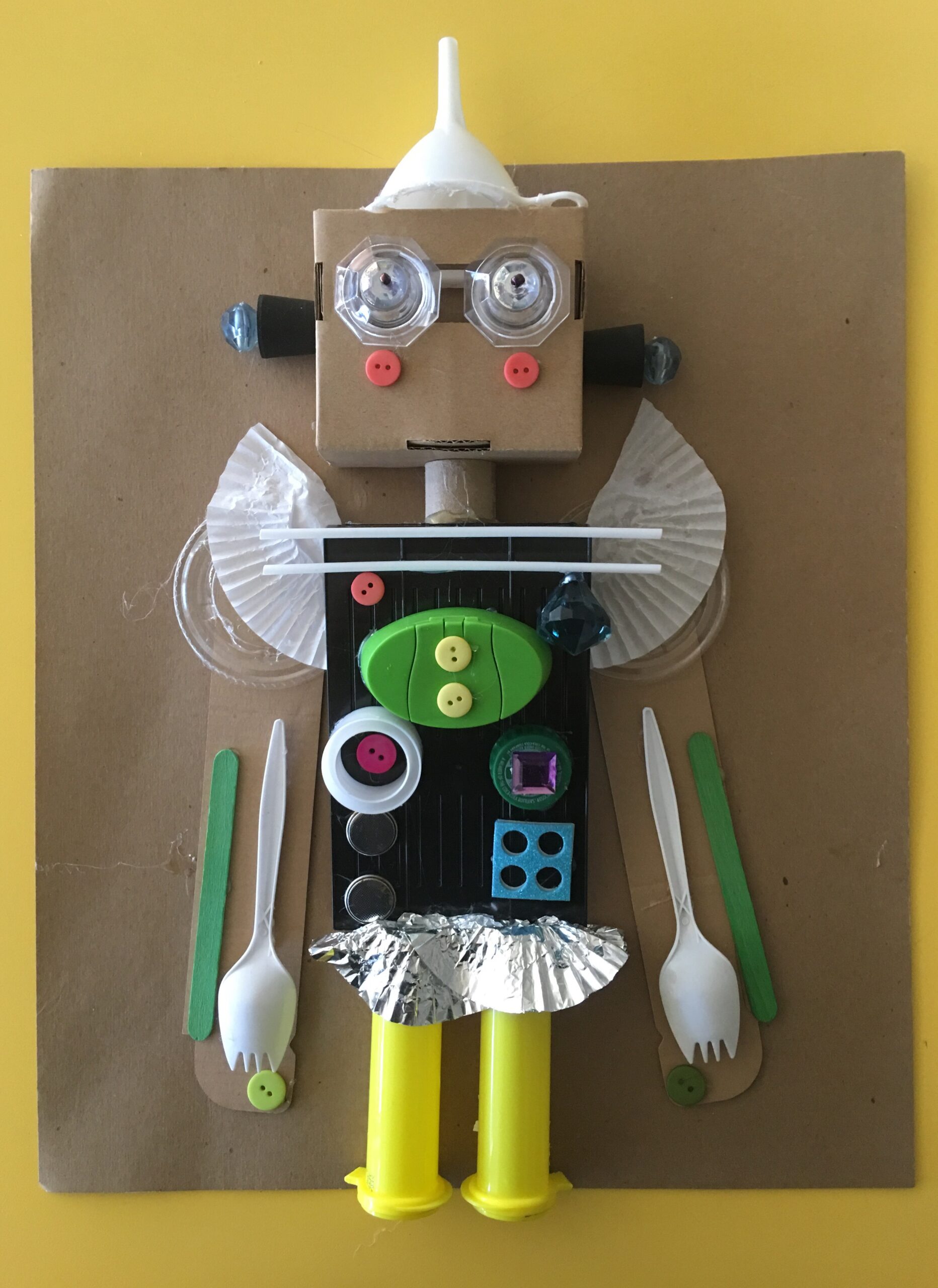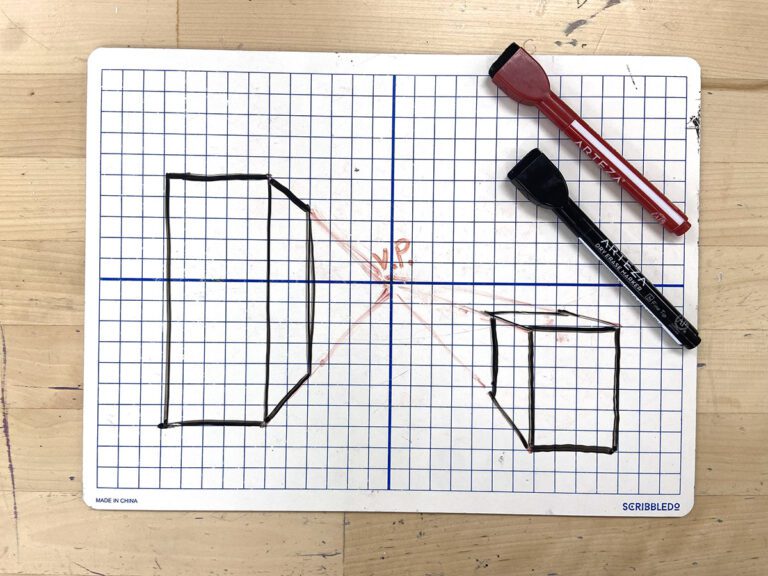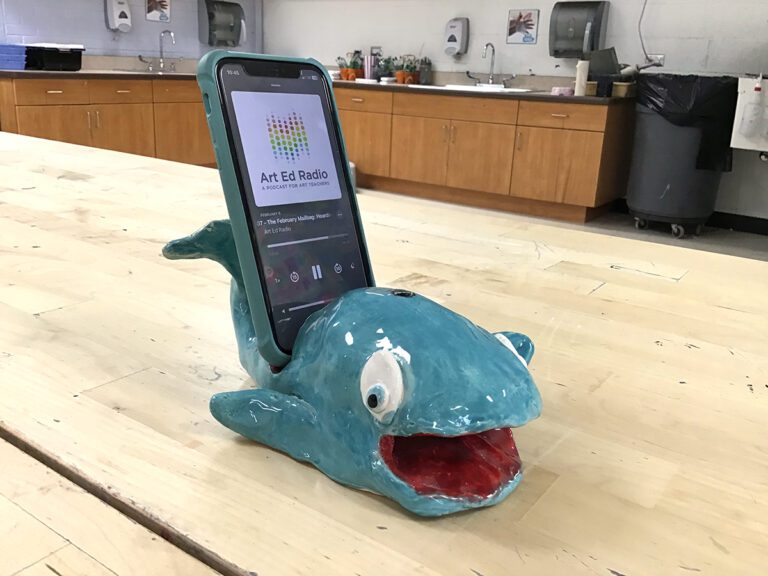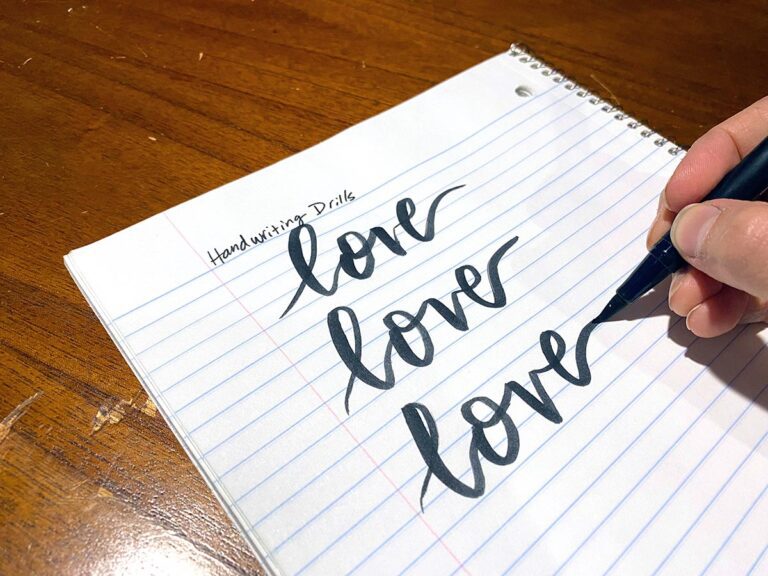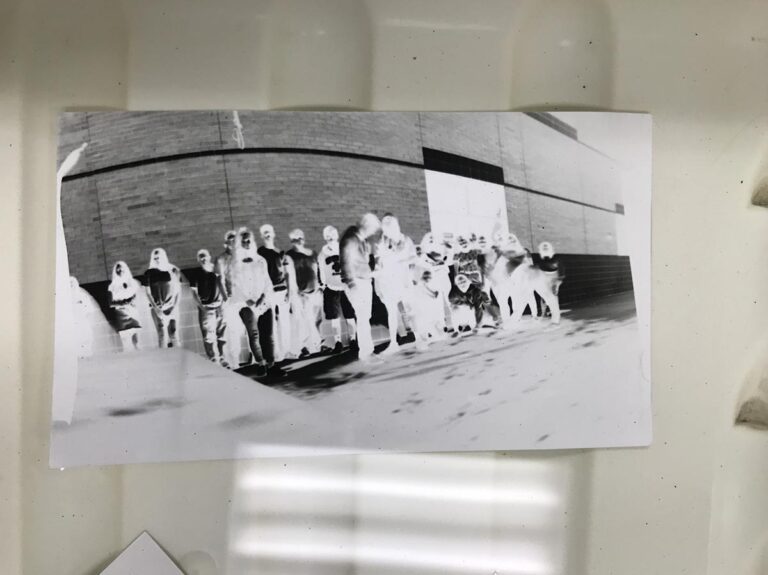Upcycling- it’s what I call turning “trash” into art. In my room, nothing goes to waste. In fact, I use my students and their families to help me collect all kinds of recyclables to use for projects.
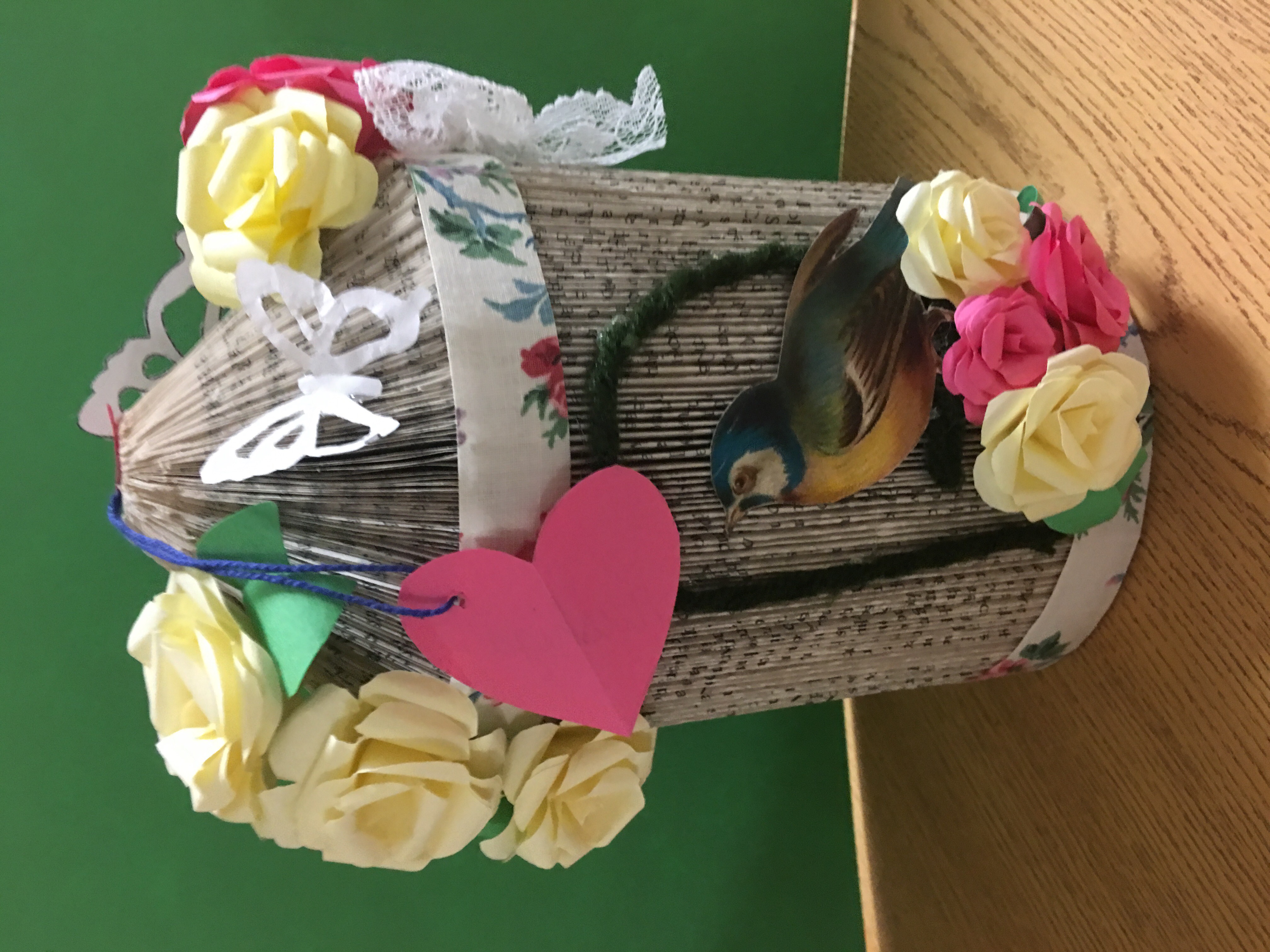
If you’re looking for some creative ways to use recyclables in your room, check out the two ideas below. Despite every student having the same materials, the variety of the work is astounding and inspiring.
Two Project Ideas Using Recycled Materials
1. Sculptural Robot Collages
In this lesson, students use everything from old CDs to paper towel tubes to create a robot. They collect items from the list below and arrange them into the semblance of a robot. When they are satisfied with the overall composition, we affix them to cardboard with hot glue. I like to use a backing because I feel it gives students more choice in their composition. However, students can also make their robots entirely three dimensional.
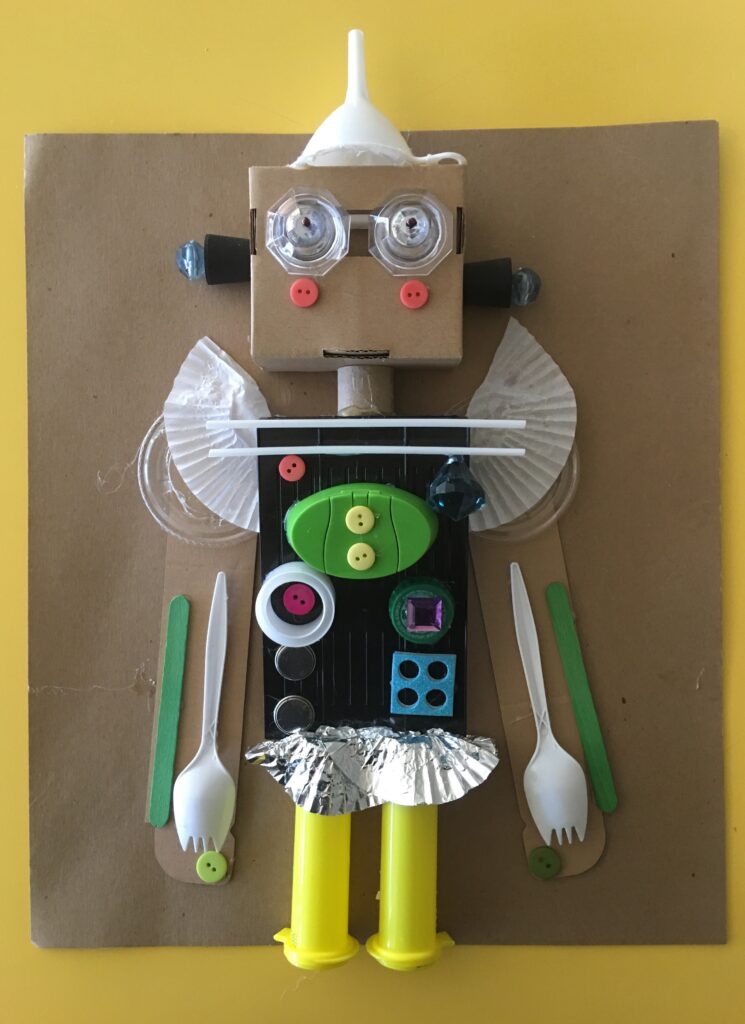
Be sure to put a call out to your staff for things like old computer parts, wires, and old disks. You never know what the library or tech ed department might have lying around!
Here are some of the recycled materials I provide for students:
- Bottle caps
- Old CDs
- Spare computer parts
- Wires
- Tubing
- Plastic containers and lids
- Corks and rubber stoppers
- Broken pencils
- Styrofoam packing
- Plastic bottles
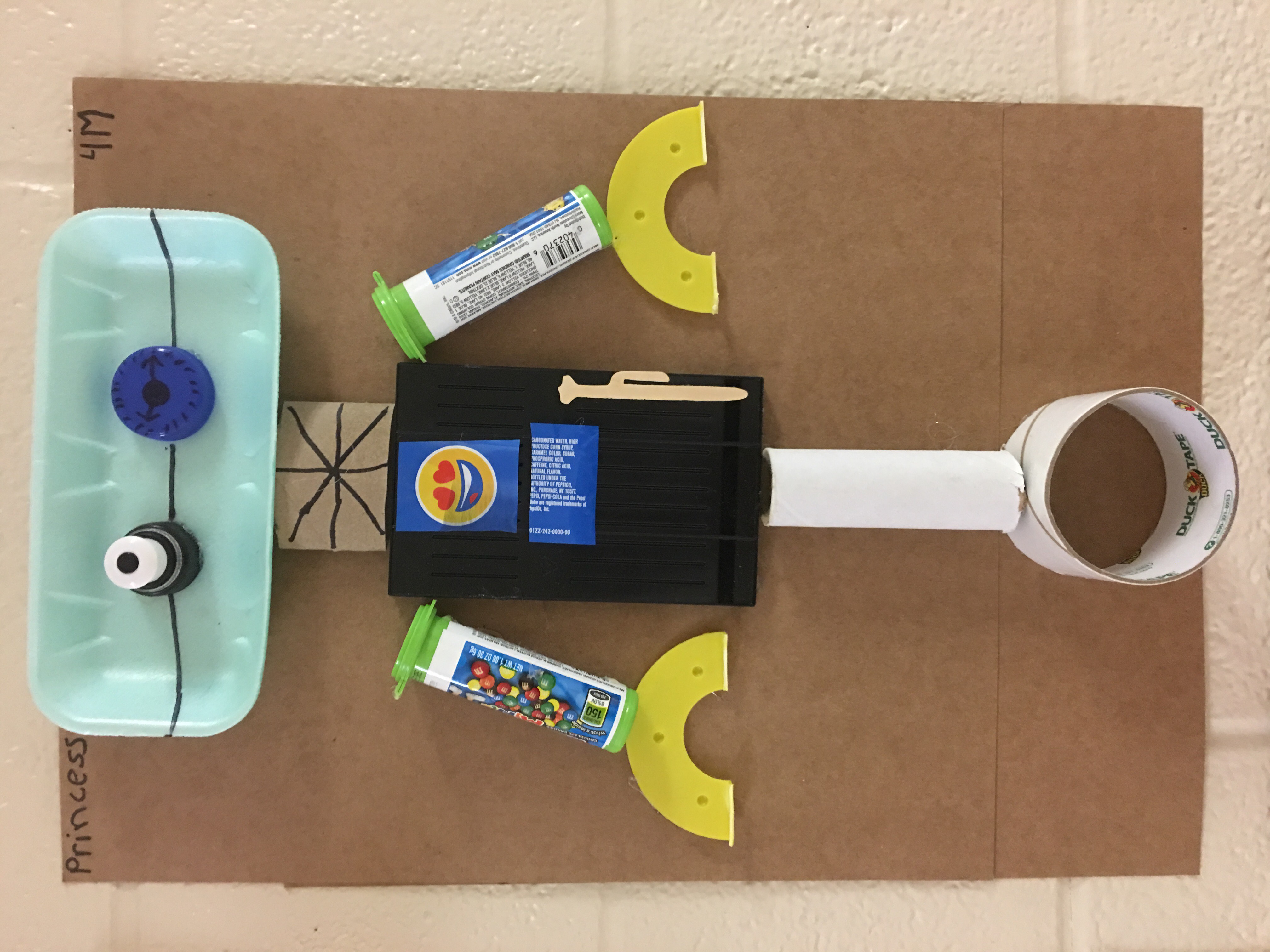
You can leave the robots “as is,” or spray paint them a single metallic color for a more cohesive look. To take the project even further, have students create an accompanying piece of creative writing. This could be done in the art room, or back in their classrooms. The students love to name their robots and share specifics about their special talents.
2. Book Animals
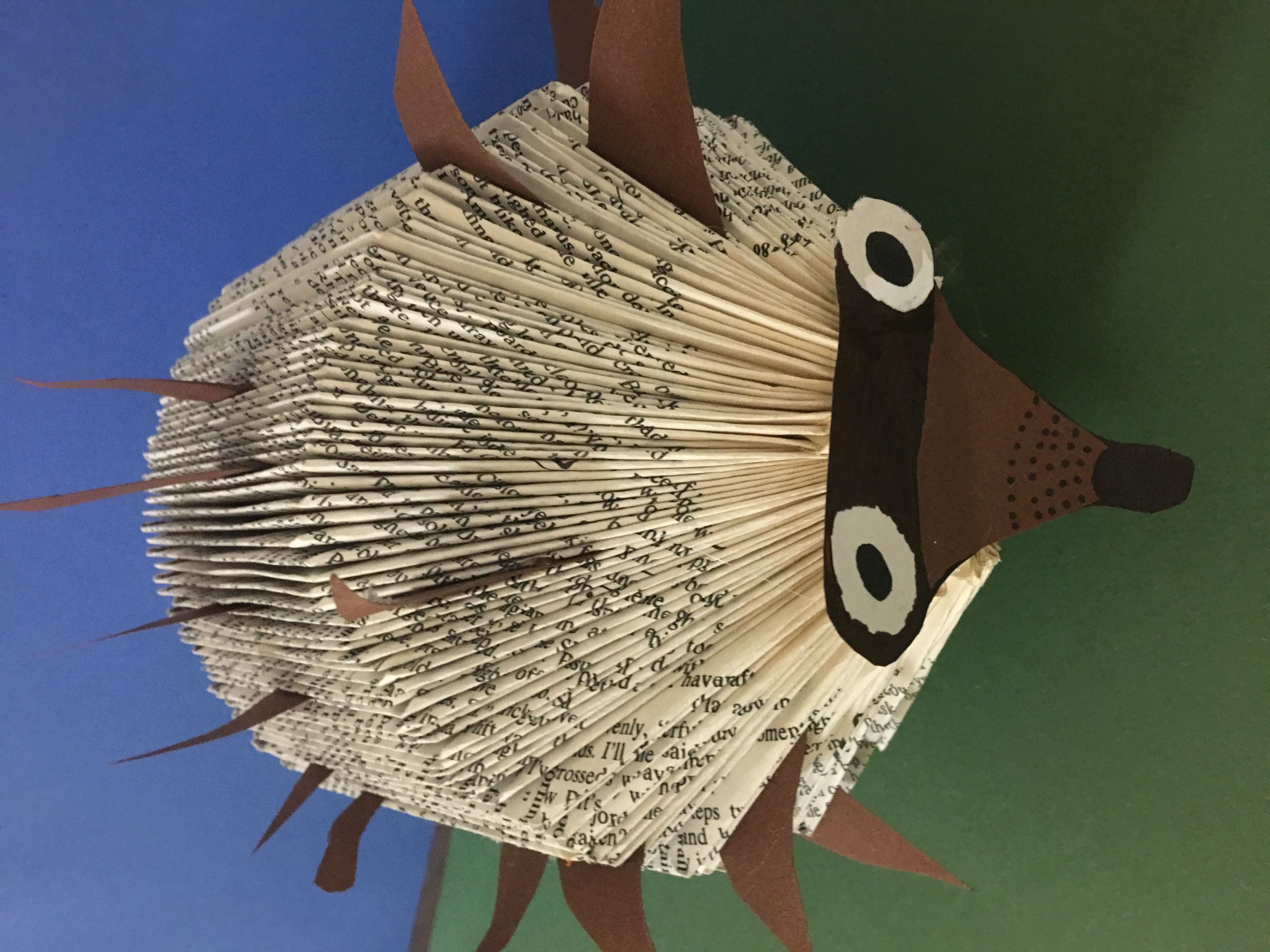
This project uses old books as a starting point. Students repeatedly fold pages of a book to create a form. The form depends on how you fold – or cut – each page. With paperback books, they secure the two covers together, resulting in either a sphere or a pyramid. With hardcovers, students brainstorm ways to incorporate the protruding covers into their overall design. Students need to make several decisions before they start folding or cutting.
These decisions include:
- Do they want a full form (paperback) or a half (hardcover)?
- Do they want a taller or shorter book sculpture?
- Do they want to fold pages or cut them?
Cutting allows for more complex shapes but is more time consuming. - What are they going to transform the book into?
It does not have to be an animal, but that is the most popular choice.
This is another great opportunity to ask your staff for donations. I get all my recycled books from my co-workers and the library’s annual discards. Everyone in my school knows not to throw old books away. They love that their “trash” is given a second life in the art room.
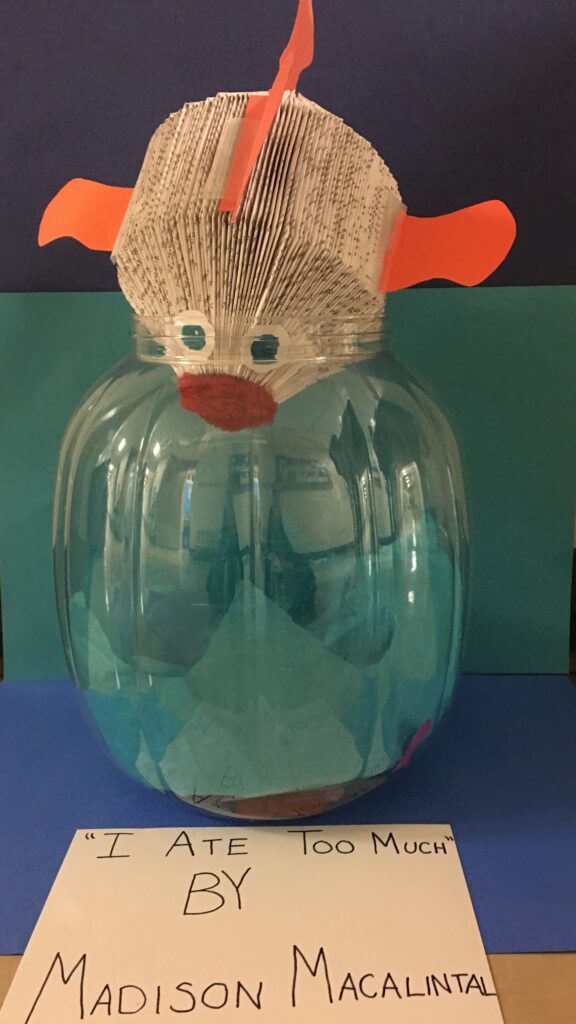
Here are the materials I provide in conjunction with the recycled books:
- Pipecleaners
- Construction paper
- Hot glue
- Googley eyes
- Markers
- Glitter
- Wet glue
- Cotton balls and pom poms
- Ribbon
- Scissors and or X-acto knives
The Outcome
Both of these projects are among student and staff favorites. When these are on display, lots of visitors drop in to say how much they enjoy checking them out. The variety of work is so exciting! Another bonus is that students discover how easily they can turn “trash” into treasure. It really gets the creative juices flowing and reminds them that anything can be a potential art material.
Do you upcycle in your room?
What are some of your favorite recycled materials to use with students?
Magazine articles and podcasts are opinions of professional education contributors and do not necessarily represent the position of the Art of Education University (AOEU) or its academic offerings. Contributors use terms in the way they are most often talked about in the scope of their educational experiences.
